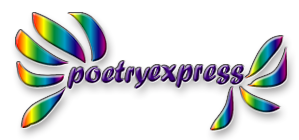Figurative language works by implication and often by indirection, which may account, in part, for the impression that poetry is hard to understand and needs to be interpreted, unlike a news article, where the language is literal and straightforward, the meaning self-evident.
And while it's true that figurative language can be suggestive and evocative, complex and obscure, it can also be direct, transparent, exact. Or all of these at once. For instance, a baseball fan who writes, "The Yankees need a new arm in the bullpen," may be using synecdoche and metaphor in ways that are perfectly clear to one reader, but incomprehensible to another. Why say "arm" instead of "pitcher"? Why say "bullpen" instead of "pitchers' warm up area"? Why call a baseball team the "Yankees"? Why not the "Confederates"?
Without getting too technical, it can safely be said that figures of speech are useful and fun. They're useful because they allow us to express complex, abstract ideas in clear, concrete images. And they're fun because they engage our wit and imagination in the meaning-making process.
A metaphor has two corresponding parts: a tenor and a vehicle. The tenor ("pitchers' warm up area" in the example above) is the literal subject of the metaphor, and the vehicle ("bullpen") is the figurative image with which the subject is being compared. And though we know the metaphor's two parts aren't identical, so close is their association that something of the vehicle rubs off and influences our perception of the tenor. We feel that the pitchers are a bit like pent-up bulls waiting to come out to the mound, where they will paw the ground and snort at batters .
Like metaphors, images are an important source of figurative language. According to Ezra Pound, "An 'Image' is that which presents an intellectual and emotional complex in an instant of time." That is, an image is a concrete expression of a poet's felt sense. For a practical example, consider Pound's "In a Station of the Metro" and his discussion of it. Notice how close this is to metaphor, how Pound places the two images alongside each other, using what he calls, "a form of super-position, that is to say it is one idea set on top of another." This "super-position" of images is his way of expressing a complex surge of ideas and feelings, as clearly and concretely as possible in a few words.
As you can see, images and metaphors are closely related and often difficult to distinguish. Though they are probably the most common and useful sorts of figurative language, other techniques (often called tropes) abound. As with metaphors and images, these tropes sometimes overlap and blend. Experiment. Try them out. You might begin by following a metaphor.
